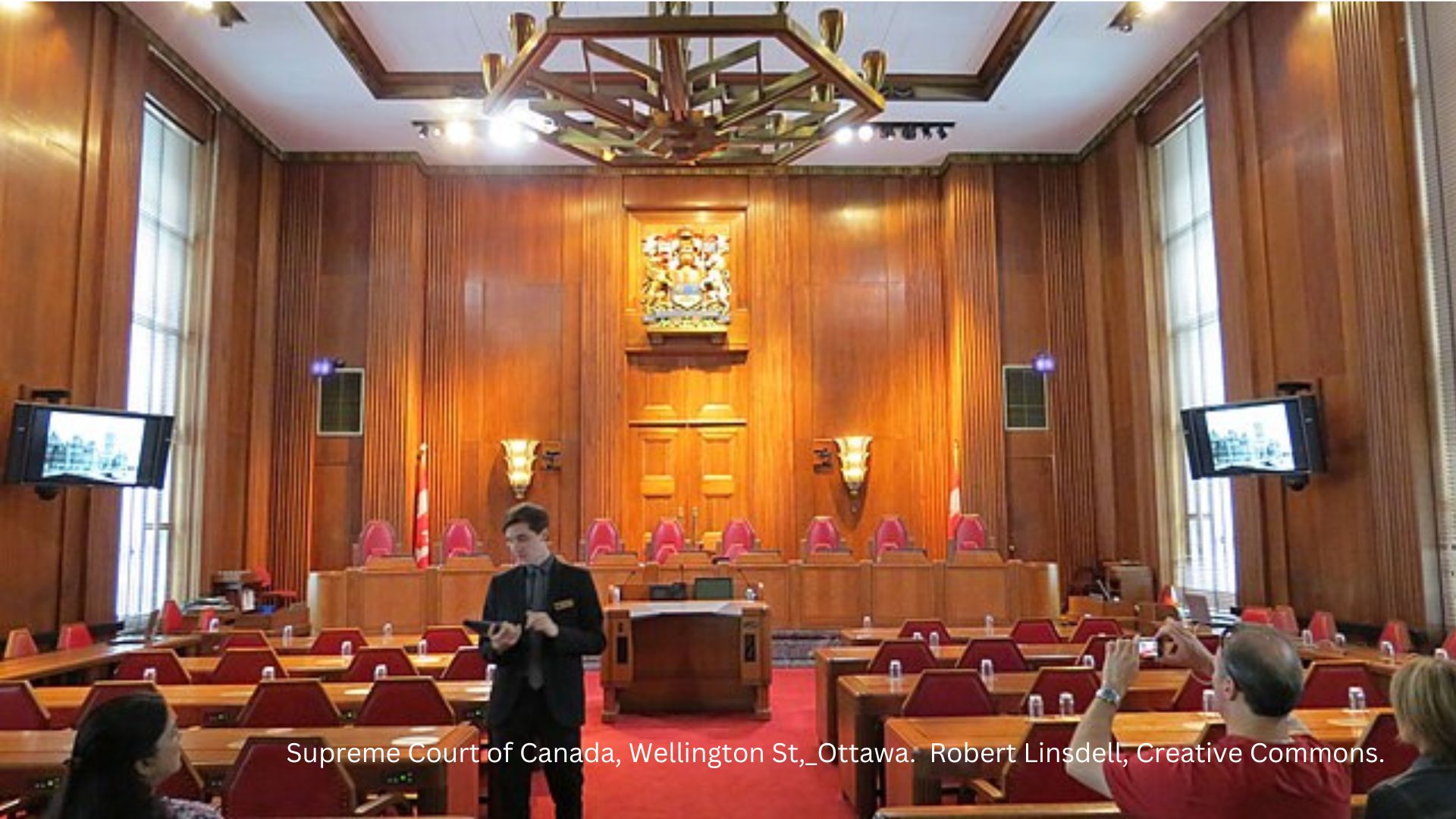
By Shauna Dobbie
The Supreme Court is one more thing in the line of defense against possible government corruption or overreach. It defends the values in our Constitution, and its power to overturn laws made by Parliament is an essential part of our system of checks and balances that underpins our democratic governance. It is a necessary safeguard that protects our rights and freedoms.
When Parliament enacts laws, it is the Court’s duty to ensure that these laws do not infringe upon the Charter. By striking down legislation that violates constitutional principles, the Supreme Court acts as a shield, defending the rights of individuals against potential overreach by the people who want to get re-elected. What is right is not always what is popular.
The Court is beholden not to the government, not to a vote by citizens, but only to the education, experience and intense consideration and debate of nine individuals who are well versed in the law. The justices of the Supreme Court are among the most knowledgeable and experienced legal minds in the country. Their decisions are based on thorough legal reasoning and a deep understanding of constitutional principles. This expertise ensures that the laws are interpreted and applied in ways that are both legally sound and equitable.
Justices serve an average of 16 years. That is longer than most Prime Ministers, who serve (as Prime Minister) for about 7 years on average. (The number actually ranges from 68 days to over 21 years.) That means that the Supreme Court is continually renewed at a very slow rate, which is good. No single Prime Minister has a hand in the appointment of every Justice, nor of a majority of Justices, at any time. The wheels of democracy must turn slowly.
But what about overreach? What about when the Court goes beyond these ideals I’m talking about and starts to, effectively, make laws?
While the Supreme Court of Canada’s primary role is to interpret the Constitution and ensure laws comply with it, the consequences of its rulings can extend beyond simple interpretation. By striking down laws, setting new legal standards, and influencing policy, the Court can shape the legal and legislative landscape in ways that resemble lawmaking. This dynamic is intrinsic to the power of judicial review and the Court’s responsibility to uphold constitutional principles, even if it sometimes blurs the lines between judicial interpretation and legislative action.
Some of cases that have come under scrutiny in the current century include:
- 2004, same-sex marriage: The Supreme Court of Canada provided an advisory opinion (at the request of the government) on the constitutionality of same-sex marriage. Critics argued that the Court was effectively making policy decisions that should have been left to Parliament. The ruling paved the way for the legalization of same-sex marriage, which some felt was a legislative rather than a judicial decision.
- 2015, physician-assisted death: The Supreme Court overturned its own previous decision and struck down the prohibition on physician-assisted dying. While many praised the decision for recognizing the rights of individuals, others felt the Court had overstepped by making a significant and complex social policy decision, a role typically reserved for Parliament. However, if Parliament had made laws consistent with the Charter, the case would not have made it to the Supreme Court.
- 2010, Omar Khadr: In this case, the Court ruled that the Canadian government had violated Omar Khadr’s rights under the Charter of Rights and Freedoms by being complicit in his detention and treatment at Guantanamo Bay. The decision required the government to take action to rectify these violations. Critics argued that the Court was overstepping by directing foreign policy and national security decisions, which are generally within the purview of the executive branch.
- 2013, legality of prostitution: The Court struck down laws related to prostitution, including those prohibiting brothels, living on the avails of prostitution, and communicating in public for the purpose of prostitution. The ruling was perceived by some as judicial activism, as it effectively created a regulatory vacuum and forced Parliament to create new legislation.
In the last three of these cases, the Court’s decisions were based on its constitutional mandate to interpret and enforce the Canadian Charter of Rights and Freedoms. When it finds that a law violates constitutional rights, it has the authority to strike it down. This judicial review process is a fundamental aspect of the Court’s function in a constitutional democracy, ensuring that individual rights are protected against potential overreach by the legislative and executive branches.
While the consequences of these rulings may influence public policy and legislative action, they remain within the Court’s purview as guardians of the Constitution.
You may not like that the decisions of the Court were within their purview, and you may disagree with the conclusions of the Court. But to accuse the Supreme Court of overreach? That’s just sour grapes.



